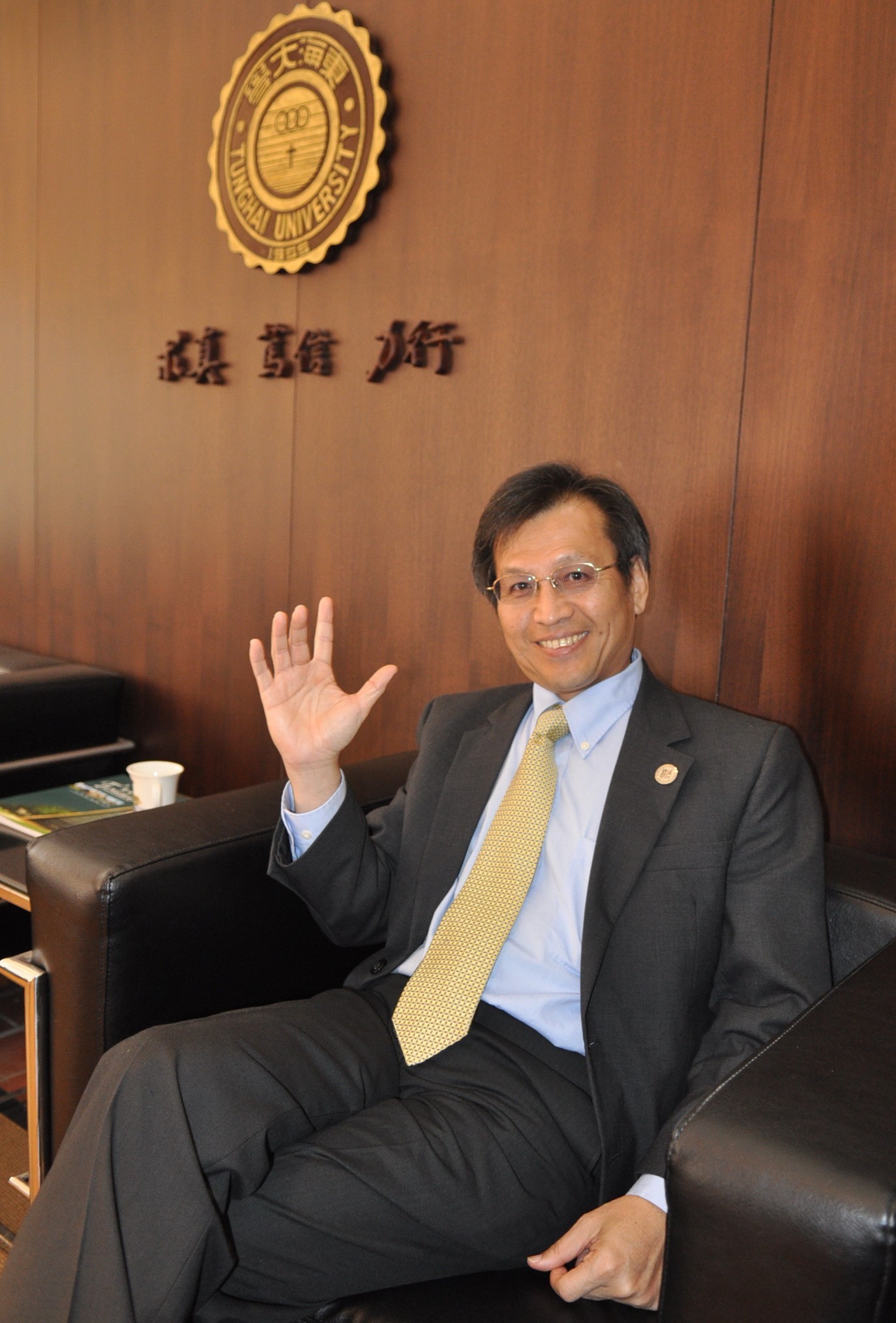Ming-Jer Tang
|
Ming-Jer Tang, Distinguished Professor |
||||
|
|
Education and Experience:
MD, Taipei Medical University, 1973-1980 PhD. University of Michigan, 1983-1987 Joined Cheng Kung University Faculty, 1990 Professor, 1996-2002 Distinguished Professor, since 2002 VP of Academic Affairs, NCKU, 2007-2011 President of Tunghai University, 2013-2016 |
|||
|
Specialty: Cell Physiology, Renal Physiology, Cell Mechanobiology, Tissue Engineering and Regenerative Medicine. |
||||
|
Award: Distinguished Research Award, National Science Council (2003-2006) Distinguished Professorship Award, NCKU (2002-2011) Wang Ming-Ning Outstanding Medical Research Award (2005) Distinguished Alumnus Achievement Award, Taipei Medical University (2007)
|
||||
|
|
mjtang1@mail.ncku.edu.tw |
|||
|
Office |
82-0702 ext. 5425 |
Laboratory |
82-0735 ext. 5428 |
|
|
Hobbies: Arts, Music, Literature and Sports |
||||
|
Research interests: |
||||
|
We employed molecular, cellular and mechanobiological approach to study pathophysiological mechanisms of cancer, organ fibrosis and keloid. Particular questions are: 1. Most cancer tissues are rigid, but cancer cells are soft, why? 2. How does tissue stiffening affect the progression of organ fibrosis and whether stem cells are remedies for organ fibrosis? 3. How is mechanical force involved in pathogenesis of keloid? |
||||
|
People: |
||||
|
Current member Research Assistant professor: His-Hui Lin, PhD Assistant Professor: Kyle Hsu, MD Post-doctoral Fellow: Hsiu-Kuan Lin, PhD. Chris YW Chiou, PhD. PhD student: Jin-Yi Liu, MS MS student: Jia-Ling Han Research Assistant: Man-Wei Wang, MS |
||||
|
Publication list(PubMed Lik) |
||||
|
1. Huang YW, Chang SJ, Harn HI, Huang HT, Lin HH, Shen MR, Tang MJ, Chiu WT. Mechanosensitive Store-Operated Calcium Entry Regulates the Formation of Cell Polarity. J. Cell Physiol. 230: 2086-2097, 2015. 2. Yu HW, Chen YQ, Huang CM, Liu CY, Chiou A, Wang YK, Tang MJ, Kuo JC. β-PIX controls intracellular viscoelasticity to regulate lung cancer cell migration. J Cell Mol. Med. 19: 934-947, 2015. 3. Harn HI, Wang YK, Hsu CK, Ho YT, Huang YW, Chiu WT, Lin HH, Cheng CM, Tang MJ. Mechanical coupling of cytoskeletal elasticity and force generation is crucial for understanding the migrating nature of keloid fibroblasts. Exp. Dermatol. 24: 579-584, 2015 4. Liu CY, Lin HH, Tang MJ and Wang YK. Vimentin contributes to epithelial-mesenchymal transition cancer cell mechanics by mediating cytoskeletal organization and focal adhesion maturation. Oncotarget 6: 15966-15983, 2015. (Co-corresponding author) 5. Lin HH, Lin HK, Lin IH, Chiu YW, Chen HW, Liu CY, Harn HI, Chiu WT, Wang YK, Shen MR, and Tang MJ. Mechanical phenotypes of cancer cells: cell softening and the loss of stiffness sensing. Oncotarget 6: 20946-20958, 2015. 6. Chen WC, Lin HH and Tang MJ. Matrix stiffness-regulated inverse expression of Krüppel-like factor 5 and Krüppel-like factor 4 in the pathogenesis of renal fibrosis. Am. J Pathol. 185: 2468-2481, 2015. 7. Yeh YC and Tang MJ. Functions of DDR1 in epithelial cell differentiation. Chapter in: Discoidin Domain Receptors in Health and Diseases. Editors: R. Fridman and P. Huang. Springer Publisher, 2015. 8. Harn HI, Hsu CK, Wang YK, Huang YW, Chiu WT, Lin HH, Cheng CM, Tang MJ. Spatial distribution of filament elasticity determines the migratory behaviors of a cell. Cell Adhesion and Migration, Accepted 2016. |
||||
|
Laboratory View |
||||
|
Laboratory activities |
||||

